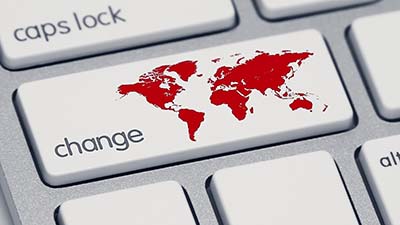Post developed by Katie Brown and Muzammil M. Hussain.
ICYMI (In Case You Missed It), the following work was presented at the 2014 Annual Meeting of the American Political Science Association (APSA). The presentation, titled “Post-Arab Spring Formations of the Internet Freedom Regime,” was a part of the Political Communication panel “From the Middle East to the Million Man March: The Continuing Digital Revolution” on Saturday August 30th, 2014.
In early 2011 through 2012, unexpected uprisings cascaded throughout the Arab World. News of this Arab Spring swept across the globe, which inspired several other cascades of political change. Communication systems, especially social media networks, offered an immediate and intimate glimpse into these movements, their successes and failures. So how have state powers and political activists responded to the political capacities of this shared and global digital infrastructure?
Communication Studies Assistant Professor and Center for Political Studies (CPS) Faculty Associate Muzammil M. Hussain studies the political economy of Internet freedom activism. In particular, he is interested in the fate of digital infrastructure in “born digital” states, or states which had successful regime changes that were enabled by digital media. The Arab Spring presents a fascinating and recent moment to consider these “born digital” states. Hussain asks what role governments – both the challenged authoritarian states and the emerging democracies – are playing in shaping communication networks. To address this, he focuses on the transnational activities of political activists promoting Internet freedom.
Hussain conducted fieldwork in the Middle East, North Africa, Western Europe, and North America between 2012-2013, after the Arab Spring protests subsided and a new kind of policy activism took root. Through this international network ethnography of policy makers, communications corporations, and political activists involved in the Arab Spring, Hussain collected a massive array of data. The data includes both interviews and participant-observation, with corroborative evidence of 5,000 individuals and their 84,000 social ties, as well as over 2,000 emails generated through their lobbying and activism work.
This meta-database encompasses the three main stakeholders in Internet freedom promotion: state powers, technology providers, and civil society actors. Hussain argues that Western democracies have been important and successful in launching several major initiatives for securing internet freedom and supporting digital activists currently working within repressive political systems. But these efforts to establish an Internet freedom policy regime are currently gridlocked in competing “communities of practice.”
On the one hand, the community of state-based stakeholders have come to narrowly regard digital media as a critical infrastructure, overvalued its significance as an economic interest and undervalued its significance to democratic activists. On the other hand, since the Arab Spring, the community of tech-savvy political activists has moved rapidly into many new communications policy arenas. Finally, revelations of warrantless surveillance by several advanced democracies have also threatened the viability of this Internet freedom regime. So what are democratic activists and Internet freedom promoters left to do? Stay tuned for Hussain’s next book project: Securing Technologies of Freedom: Internet Freedom Promotion after the Arab Spring.


